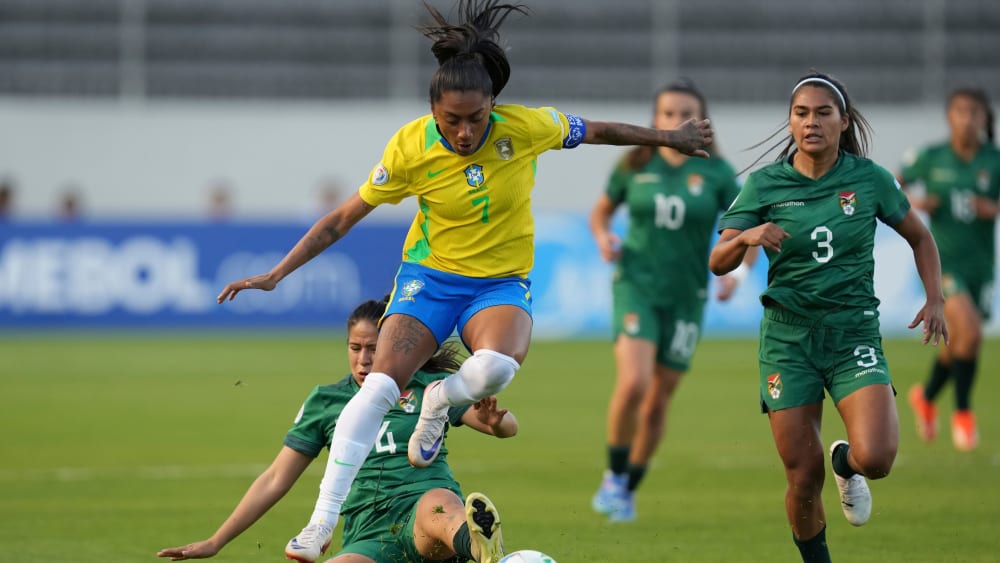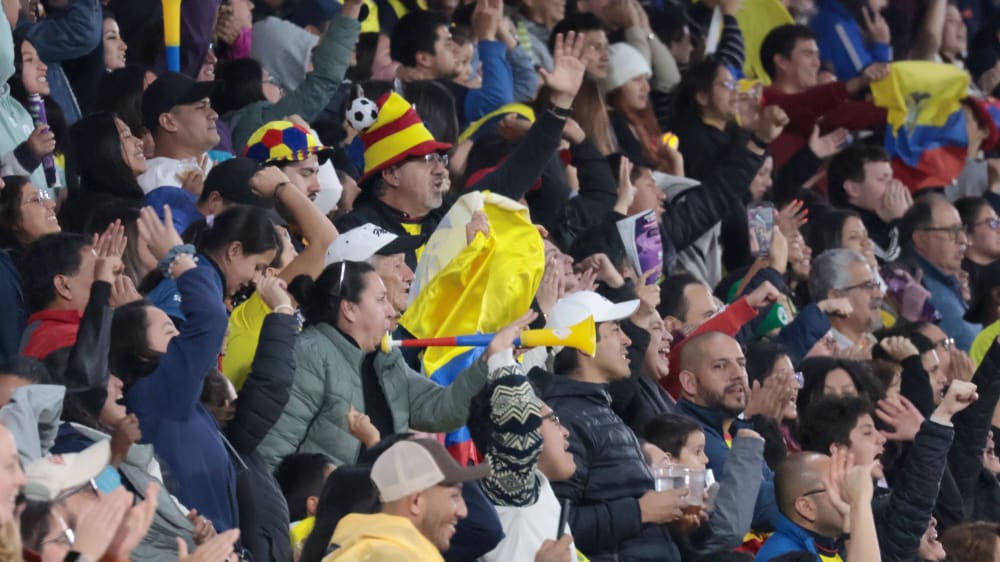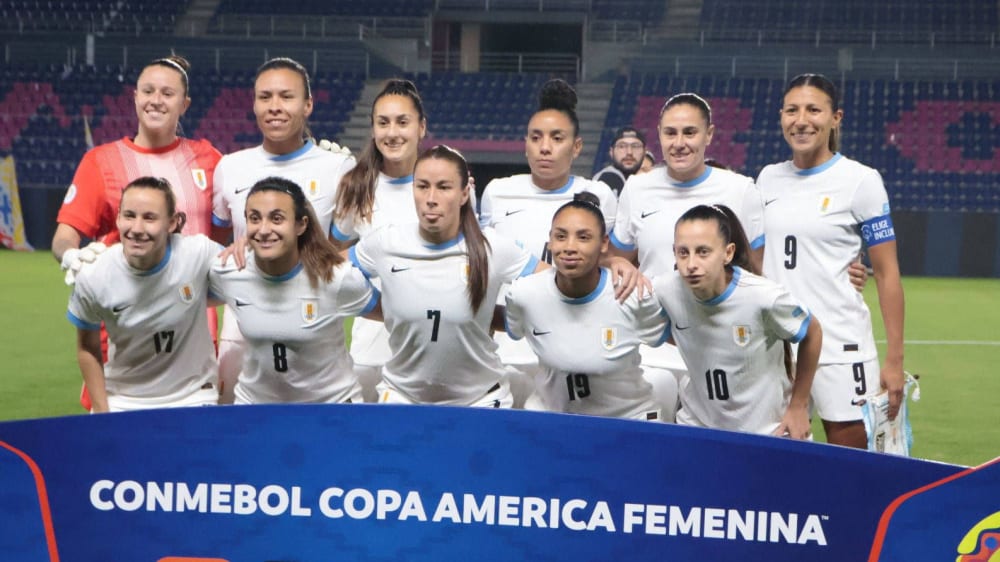"Surreal differences": Why the rest of women's football looks enviously towards the European Championship

The European Championship in Switzerland is a complete success – but it's not normal for global women's football. At the same time, teams are competing for prestige, money, and spectators at the continental tournaments in Africa and South America. And they're competing under sometimes degrading conditions.
Full stadiums are the exception at this year's WAFCON. IMAGO/Shengolpixs
Brazil's captain Kerolin was on edge. "The whole world is evolving, and nobody here cares. That's impossible," ranted the 25-year-old, whose national team had just triumphed 6-0 over Bolivia. At the Copa America Femenina , the South American equivalent of the Women's European Championship, the victory brought the Selecao a big step closer to the semifinals. But there was little sign of a relaxed mood among the Brazilians afterward. Instead, there was anger, frustration, and disappointment.
The reason for this hadn't happened on the pitch, but off it. And it was exactly what should have happened on that pitch. The very place where the Brazilian and Bolivian players would have liked to warm up for the match – something the host association CONMEBOL didn't allow out of concern about overloading the pitch. The result: Both teams had to warm up in a shared indoor space of just a few square meters, as videos circulating on social media showed . An organization "that runs better in every amateur tournament," complained Brazil midfielder Ary Borges.

Developments like these seem almost unthinkable at the current Women's European Championship. The European Championship in Switzerland appears so professionally staged, well-organized, and met with such high levels of interest that it's all too easy to overlook the global problems facing women's football. The extent of these problems, however, is evident in the two continental tournaments taking place parallel to the European Championship: the South American Copa America Femenina and the Women's Africa Cup of Nations (WAFCON).
Tournament troubles counteract progressIt's undisputed that women's football has made tremendous progress in Africa and South America. WAFCON host Morocco recently increased its budget for women's football tenfold to 65 million US dollars, and Copa America host Ecuador recently unveiled its first high-performance center for women's football. Brazil's women's team has been a force to be reckoned with at World Cups for decades, and Colombia and Argentina are also making increasing progress in their football development. "We used to have Messi and Riquelme as role models. Now the girls have us, and that's a great thing," says Argentina midfielder Flor Bonsegundo.

This makes it all the more bitter to consider the many problems African and South American women's football still faces. At this year's WAFCON, even the scheduling process was a complete mess: The tournament was originally scheduled to take place last year, but this was hampered by Zambia and Nigeria's participation in the Olympics. Just a few weeks before the scheduled start and following massive public protests, the host association CAF postponed the competition by a year to July 2025 – resulting in numerous African teams not having competed in any competitive competition for more than a year and a half.
Nineteen months after the conclusion of the qualifying round, the tournament finally began on July 5th. The matches were almost always played in nearly empty stadiums, with the only match featuring host country Morocco consistently being packed. There, WAFCON is generating interest not only among the general public – reportedly, the royal family, after its massive investment in women's football, is expecting nothing less than winning the tournament. Morocco is still one victory away from achieving that, as the host nation will face Nigeria in the final on Saturday.
The North Africans had already reached the final at the last WAFCON, but were narrowly defeated by South Africa. The defending champions, meanwhile, had more of a struggle of their own at this year's edition: Due to outstanding payments from their own association, the South African players had to go on strike before the tournament, and the former champions' sporting career ended in the semifinals.
A similar picture is currently unfolding at the Copa America Femenina, whose final will take place on August 2nd. There were threats of strikes from the Uruguayan side, but only shortly before the start of the tournament did the players reach an agreement with their association on improved training conditions, thus avoiding a boycott. At the Copa, too, the stadiums are only half-filled for matches involving host nation Ecuador or neighboring Colombia, but to date, they have not been sold out once.

The $1.5 million prize money awarded to the winner of the South American tournament is likely to be more of an incentive. The prize money for WAFCON is also quite respectable: The tournament champion receives $1 million, and the total budget for the African competition has even been increased by 45 percent to $3.75 million. A significant increase—but still negligible compared to the Women's European Championship and its prize pool of over $40 million.
The focus is on EuropeIt's therefore understandable that players and coaches are currently looking to Europe with a mixture of envy and disbelief. "I watched the European Championship today. The differences in organization, spectators, and investment are surreal," said Brazil's captain Kerolin after the pitch scandal in the Bolivia match. And Swedish coach Kim Björkegren, who coached Ghana to the semifinals at WAFCON, emphasized that there is "so much talent in the country. If we could bring in just five percent of the Swedish organization, we would have a team that could play well worldwide."
The WAFCON and the Copa America Femenina have indeed demonstrated that there is no shortage of football skills – not only through the performances of stars like Barbra Banda (Zambia), Linda Caicedo (Colombia), or Brazilian legend Marta , who was brought back especially for the tournament. And at least the South American football association CONMEBOL is now apparently allowing all participating teams to warm up on the pitch, according to a memo sent to the teams, according to The Athletic .
The fact that it took public complaints to get this done remains a major embarrassment for the association. For all its quality, women's football truly deserves better by now.
kicker





